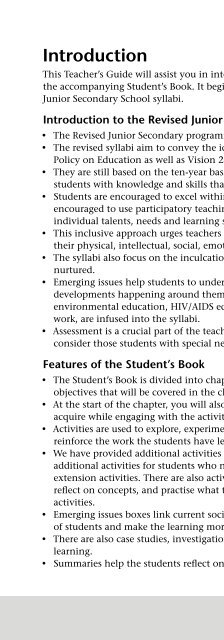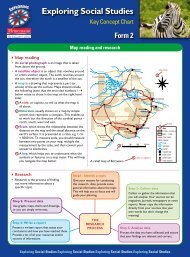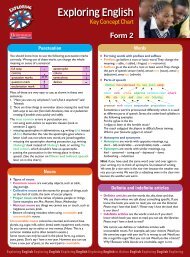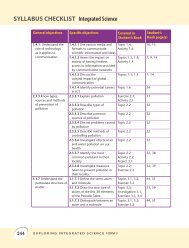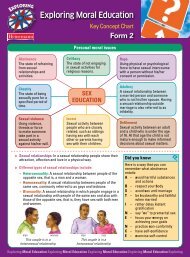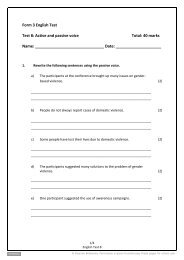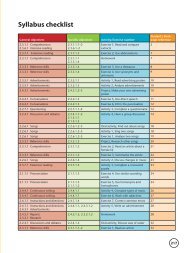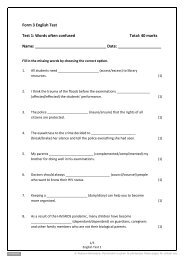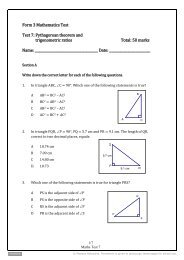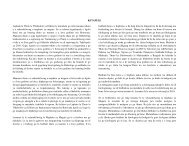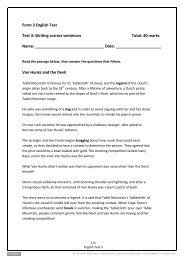Teacher's Guide - Pearson
Teacher's Guide - Pearson
Teacher's Guide - Pearson
- No tags were found...
Create successful ePaper yourself
Turn your PDF publications into a flip-book with our unique Google optimized e-Paper software.
IntroductionThis Teacher’s <strong>Guide</strong> will assist you in interpreting and presenting the activities inthe accompanying Student’s Book. It begins with an introduction to the RevisedJunior Secondary School syllabi.Introduction to the Revised Junior Secondary School syllabi• y The Revised Junior Secondary programme has not been drastically changed.• y The revised syllabi aim to convey the ideals reflected in the Revised NationalPolicy on Education as well as Vision 2016.• y They are still based on the ten-year basic education philosophy and equipstudents with knowledge and skills that are relevant in today’s world.• y Students are encouraged to excel within their own capabilities. Teachers areencouraged to use participatory teaching and diverse learning approaches asindividual talents, needs and learning styles are recognised.• y This inclusive approach urges teachers to accommodate all children regardless oftheir physical, intellectual, social, emotional, linguistic or other conditions.• y The syllabi also focus on the inculcation of attitudes and values that need to benurtured.• y Emerging issues help students to understand and cope with the challenges anddevelopments happening around them. These emerging issues, such asenvironmental education, HIV/AIDS education, gender equality, and the world ofwork, are infused into the syllabi.• y Assessment is a crucial part of the teaching and learning process, and should alsoconsider those students with special needs.Features of the Student’s Book• y The Student’s Book is divided into chapters. The first page of each chapter lists theobjectives that will be covered in the chapter.• y At the start of the chapter, you will also find a list of key skills that students willacquire while engaging with the activities.• y Activities are used to explore, experiment, research and discover, while exercisesreinforce the work the students have learnt.• y We have provided additional activities for students of mixed abilities. There areadditional activities for students who need additional stimulation. They are calledextension activities. There are also activities for students who need extra time toreflect on concepts, and practise what they have learnt. They are called supportactivities.• y Emerging issues boxes link current social and economic issues to the environmentof students and make the learning more practical.• y There are also case studies, investigations and homework exercises to reinforcelearning.• y Summaries help the students reflect on the work they have learnt.Introductionv


